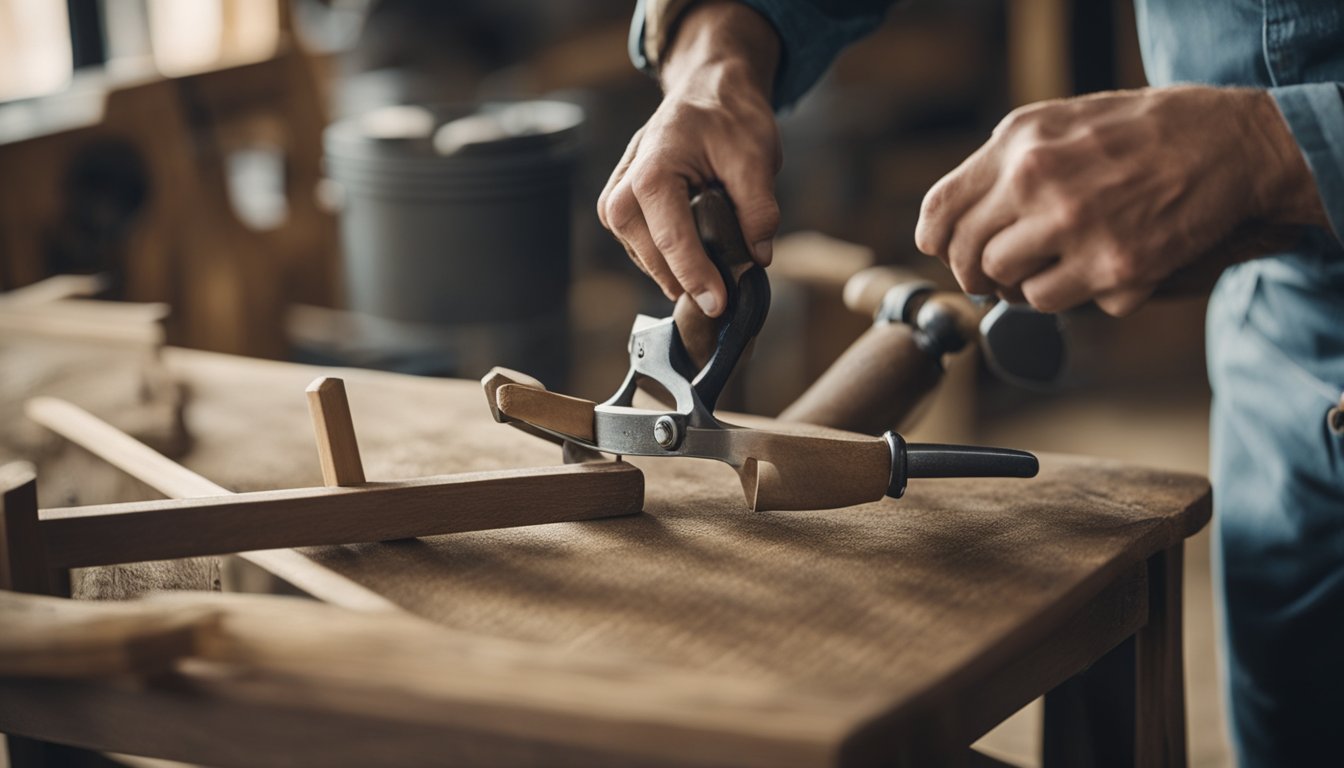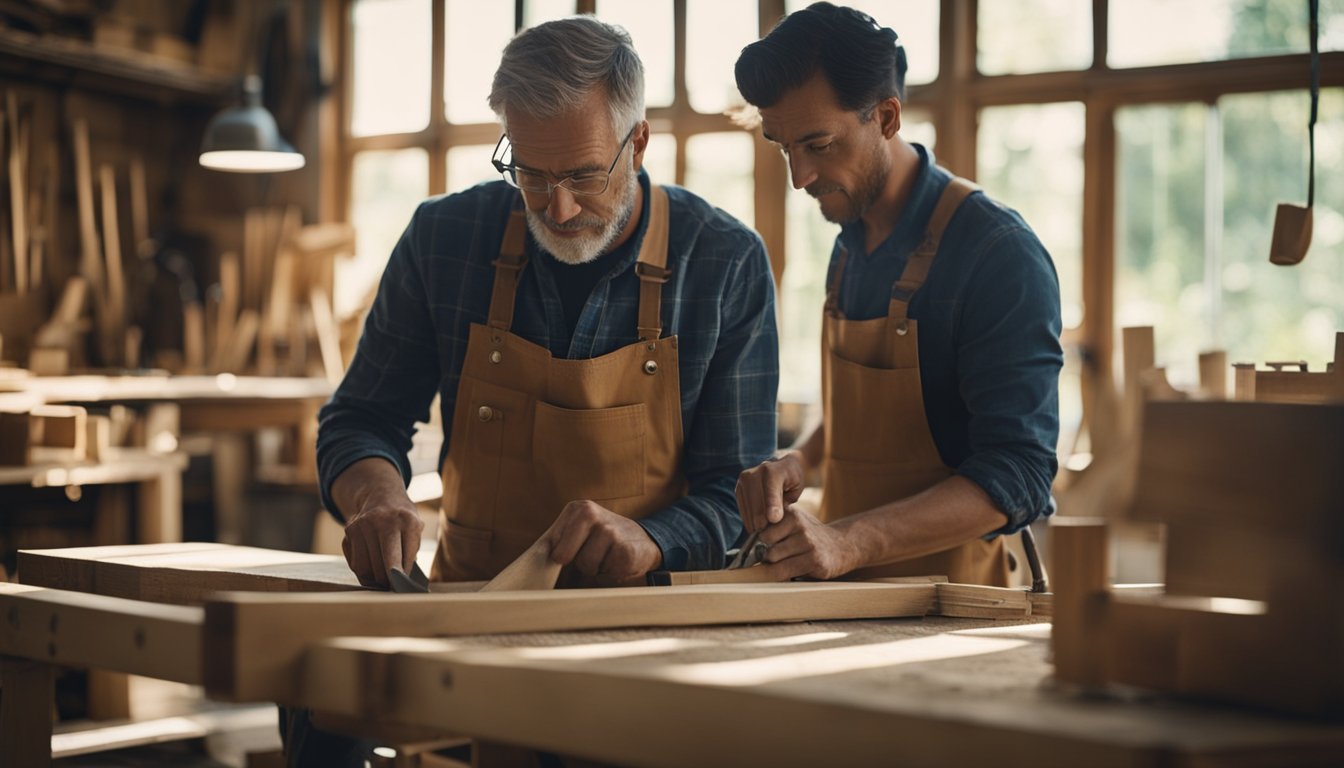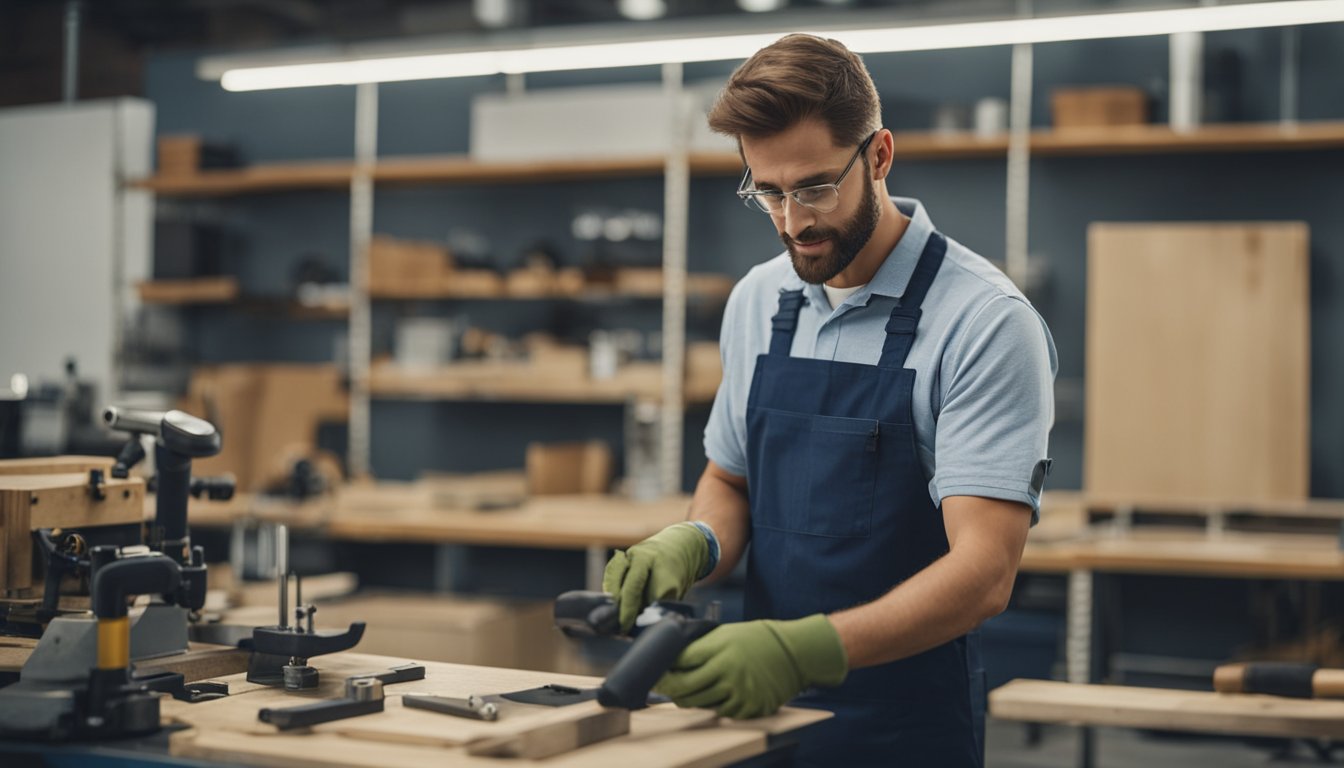Late updated: 15 Feb 2025 15:02
Written by: Sarah Hollister
Eco-Friendly Furniture Repair Techniques: Sustainable Solutions for Your Home
Eco-friendly furniture repair techniques offer us the chance to merge functionality with environmental consciousness. By choosing sustainable methods, we reduce our carbon footprint while giving old furniture a new lease on life. Using materials that are gentle on the planet and techniques that preserve resources is our way to contribute to a healthier environment.

Our selection of eco-friendly practices not only rejuvenates furniture but also prevents unnecessary waste in landfills. Whether it’s hand sanding to avoid toxic chemicals or using recycled materials for repairs, the options are both diverse and rewarding. The beauty of it lies in creating unique pieces that reflect individual style without compromising on sustainability.
Embracing these techniques allows us to breathe new life into treasured items, blending creativity with responsibility. As we delve into the specifics of these methods, you'll learn how to integrate these practices into your DIY projects with ease and effectiveness.
Key Takeaways
- Eco-friendly repair reduces waste and preserves resources.
- Sustainable materials and methods make a positive impact.
- Unique styles emerge from environmentally conscious practices.
Understanding Sustainable Furniture Repair
Sustainable furniture repair is all about minimising environmental impact while extending the longevity of our beloved items. By using eco-friendly materials and innovative techniques, we can contribute positively to environmental preservation and enjoy functional, unique furniture pieces.
Assessing Furniture for Eco-Friendly Repairs
Before initiating any repair project, it's crucial to evaluate the condition of the furniture. Identifying damage types—such as scratches, structural weakness, or surface wear—is essential for planning sustainable restoration. We need to consider which parts are worth repairing and which might require replacing with eco-friendly alternatives.
Material assessment is also important. Furniture made from natural materials, like wood, often responds well to restoration, whereas synthetic materials may present challenges. Our focus should be on choosing sustainable materials that align with the original design when possible.
Principles Of Environmental Impact Reduction
While repairing furniture, our methods should prioritise reducing the environmental footprint. Opting for non-toxic finishes and using water-based paints or natural oils can significantly lower harmful emissions. Locally sourced materials also play a role in minimising shipping-related emissions, enhancing the sustainability of our projects.
Another principle is minimising waste. This involves reusing parts, repurposing scraps, and recycling whenever possible. By adhering to a philosophy of minimal waste, we not only prolong the life of furniture but also contribute positively to waste reduction efforts.
Tools and Techniques for Sustainable Repairs
Having the right tools can make all the difference in eco-friendly furniture repair. Essential tools include sanders, paint sprayers, clamps, and hammers. These tools, complementing some basic skills, allow us to perform efficient and precise repairs while maintaining quality.
Techniques such as using aluminium plates for structural reinforcement are effective for sustainable restoration. This approach not only strengthens furniture but also incorporates recyclable materials. The application of patching materials, especially eco-friendly adhesives and glues, ensures that repairs are durable yet environmentally considerate.
Sustainability in furniture repair is an attainable goal when emphasis is placed on proper assessment, reducing environmental impact, and using the right tools and techniques. By following these guidelines, we can enjoy the dual benefits of beautiful home furnishings and a healthier planet.
Materials and Methods for Eco-Conscious Restoration

Adopting eco-friendly practices in furniture repair involves selecting sustainable materials, innovative upcycling methods, and techniques to minimise waste. Each approach plays a vital role in reducing environmental impact and giving furniture a new lease of life.
Choosing Sustainable Materials
Using sustainable materials is pivotal in eco-conscious restoration. Reclaimed wood is a prime example, offering a second life to timber that might otherwise go to waste.
Recycled materials such as metal and glass can also be creatively integrated into furniture pieces. Selecting non-toxic finishes and adhesives ensures safety and sustainability, keeping harmful chemicals at bay. It's essential to research suppliers to confirm materials are genuinely sustainable, as certifications or eco-labels often indicate environmentally-friendly sourcing.
Upcycling and Repurposing Furniture
Upcycling transforms old or unwanted items into something new and functional. This process encourages creativity by allowing us to see potential in what might initially seem useless. Repurposing furniture offers opportunities to merge different styles or adapt pieces for entirely new uses.
For instance, an old door can become a robust table, while crates can morph into shelving units. Utilising existing materials conserves resources, making upcycling an exciting challenge for those who enjoy custom projects. Each piece tells its own story, enhanced by its history and renewably-minded transformation.
Techniques for Minimising Waste in Furniture Repair
Minimising waste in furniture repair involves being conscious of resource use and disposal. Prioritise well-planned repairs—a thorough assessment can help determine whether a piece can be restored with minor adjustments or if more substantial work is required.
Utilising scraps effectively, such as turning offcuts into coasters or wall art, can further reduce waste. Engaging in community sharing or donation of unneeded materials supports circular economies. Keeping repair waste out of landfills is a significant step toward sustainability, contributing positively to our environment and ensuring a brighter future.
Frequently Asked Questions

Sustainable furniture repair entails using eco-friendly techniques and materials. This approach not only helps in conserving natural resources but also enhances the longevity and aesthetic value of furniture.
How can damaged wooden furniture be repaired using sustainable methods?
To repair damaged wooden furniture sustainably, we can use reclaimed wood for patching or replacing parts. Selecting adhesives and finishes made from non-toxic, biodegradable materials also helps maintain a chemical-free approach. Using hand tools instead of power tools reduces energy consumption. These methods ensure that repairs are environmentally friendly and durable.
In what ways can furniture restoration be considered environmentally beneficial?
Furniture restoration plays a critical role in reducing waste, as it minimises the demand for new furniture production. By restoring old furniture, we decrease landfill contributions and save energy and materials. Furthermore, it allows us to repurpose and reuse items, thereby supporting a circular economy and promoting sustainable living.
What materials are recommended for eco-friendly furniture repair?
Environmentally friendly repair materials include bamboo, reclaimed wood, and recycled metal. Natural oils such as linseed or tung oil provide excellent alternatives for wood finishes. We can use plant-based waxes for polishing, and water-based adhesives present safer options for bonding.
How does furniture refinishing contribute to sustainability?
Refinishing involves stripping old finishes to apply new ones. By using non-toxic strippers and natural oils, we reduce harmful emissions. It allows us to retain existing furniture, which conserves the materials and energy that would otherwise go into producing new items. This practice aids in extending the life span of furniture.
What are the best practices for maintaining furniture to extend its life cycle while being eco-conscious?
Regular maintenance using eco-friendly products enhances furniture longevity. Dusting with a soft cloth, using natural cleaners, and avoiding extreme temperatures or humidity keep furniture in good condition. Simple repairs like tightening screws and joints prevent larger issues, reducing the need for replacement.
Can you suggest environmentally friendly alternatives for traditional furniture adhesives and finishes?
Plant-based adhesives offer an eco-friendly alternative to synthetic glues. Natural resin or casein glues work effectively for various repairs. For finishes, natural oils like linseed or soy-based products are excellent choices. Shellac and beeswax can provide durable and safe polishing options, ensuring both sustainability and quality.
